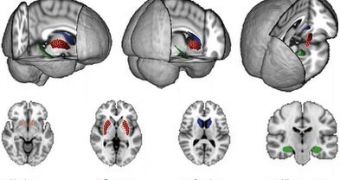Despite popular belief, a big head, or a big brain doesn't guarantee a superior intellect. Humans may be the smartest species on Earth, but there are plenty of animals that have a larger brain than ours. Apparently, the mental capacity is derived from the proportion and size of certain areas of the brain. The same goes with physical strength, as an obese person is by no means stronger than a 100 pound-lighter bodybuilder. And it looks like there is a very close connection between the proportions of your brain area and your performance in video games. Presenting their study results in the journal Cerebral Cortex, a multi-disciplinary team from the University of Illinois, the University of Pittsburgh and Massachusetts Institute of Technology, turned 39 adults, ten men and 29 women, into video-game Guinea-pigs. If you're wondering why men and women weren't divided equally in the groups, it was because the subjects selected were supposed to have spent less than three hours a week playing video games in the past two years, and they simply couldn't find more that ten men who fit that description.
The test involved two games, one that focused on a single goal, and another one that featured "side quests," giving test subjects an array of things to accomplish. "The great thing about using a video game rather than methodical cognitive tests is that it brings us a step closer to the real world and the challenges people face," Professor Arthur Kramer of the University of Illinois said.
MRI scans showed that subjects with a bigger nucleus accumbens, the part of the brain that handles the reward center, outscored others in the first few hours of the game. This could have a lot to do with the "sense of achievement and the emotional reward" that's present in the early stages of learning. But in the long run, subjects that performed better in the "side quest" game were those that had a larger caudate and putamen, located in the center of the brain. In other words, people with shallow brains work better in sprints, while those with denser ones are more of the marathon runner-type.
"This makes sense, because these areas have been linked to learning procedures and new skills, as well as adapting to changing environments. These people could do a number of things at once. Think of it like driving a car, as well as looking at the road, you're tampering with your GPS, and talking to your passengers," Professor Kramer added.
As one of the end conclusions to its study, the team believes that a quarter of the difference in performance could be predicted by measuring the volume of the brain. But that doesn't mean your video-game performance is determined at birth, and you can always fight destiny.
"It has been shown that some parts of the brain are fairly plastic – they can change and develop. The more we learn about these structures and function the more we can understand the circuits that promote memory and learning. That can have educational benefits but also implications for an ageing population where dementia is an issue," the old professor said.

 14 DAY TRIAL //
14 DAY TRIAL //